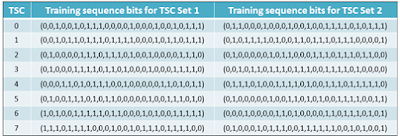VAMOS (Voice services over Adaptive Multi-user channels on One Slot) IN GSM part2
BY engineer Abdullah Saleh
Training Sequences :
as mentioned in the part 1 the definition of the Training sequences the below part is explain the Use of Training sequence in Equalizers:
-As the information will be distorted due to time dispersion problem in air interface, the TSC will be distorted too.
-The channel estimator correlates the stored TSC with the received TSC to estimate the channel impulse response.
-The signal generator generates versions of all possible data sequences that could come from the transmitter.
-The generated signal then pass to a channel model which is a simulation of air interface to calculate the expected received data of the estimated transmitting data.
-The Viterbi algorithm will compare the actually received data with the output of channel model, if the received distorted data has matched the simulated distorted received data, then the locally generated data is the same as the data that was actually transmitted. And if not the process will repeated with different signal generator sequence of data.
Use of Training sequence in VAMOS:
-As cross-correlation properties of the existing (legacy) eight TSCs are not ideal, this leads to additional interference experienced by the MS. The legacy TSC set is referred to as “TSC set 1”.
-In order to improve the correlation properties a new improved set of training sequences “TSC set 2” was specified. The new set of training sequences has been found based on computational simulation work in order to obtain the best possible result with respect to cross correlation properties between existing and new training sequences.
-When using “TSC set 1” the TSC must exhibit low cross-correlation and good auto-correlation in the presence of the other sub channel.
-When using “TSC set 2” the multiplexing is done by taking two TSC with the same index in both sets.
to understand the VAMOS read other parts

